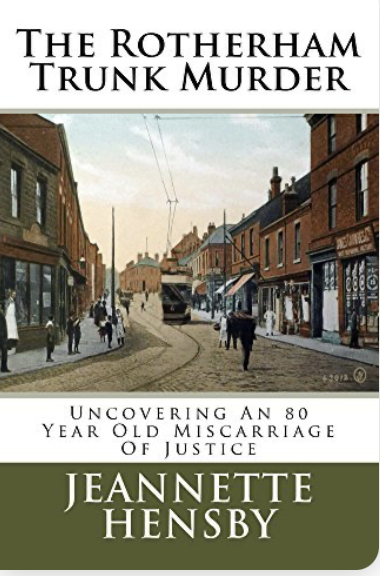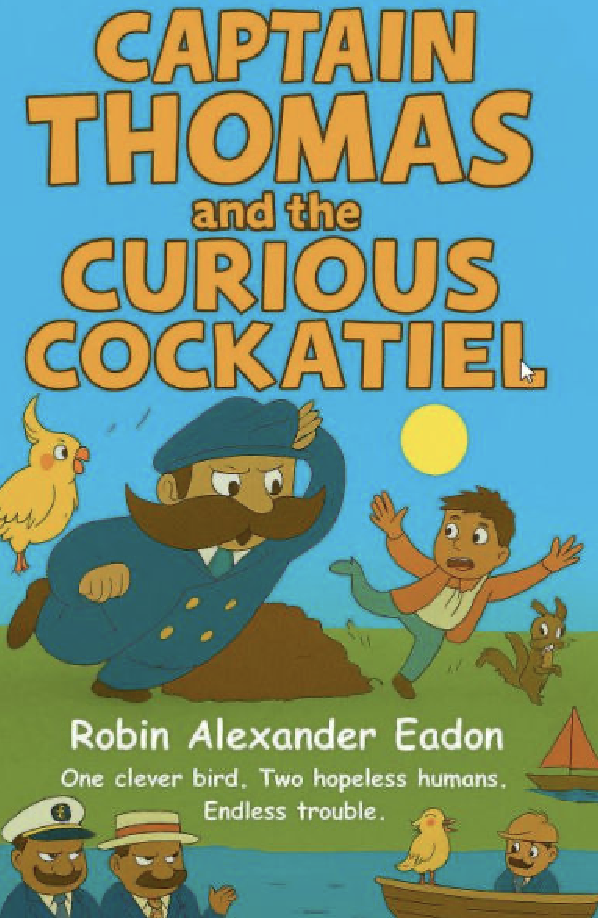
By Jeanette Hensby
PREFACE
It is more than fifty years since I sat with my grandma (Dad’s mother),and listened as she shared a secret with me. A secret about a murder that a neighbour of hers had been involved in some years before. We were sitting in her kitchen beside a roaring fire on a wet and miserable day. I was about nine or ten years old. Since I have grown up, I have been mildly interested to try and find more detail about the case, and whenever I have seen a book about “Rotherham murders” or “Yorkshire murders” or “20th century murders” I have always skimmed through hoping to find the case, but without any success. More recently I have tried searching the internet using the information that I knew about the case, but again I could never turn anything up. All that changed last year:
My mother is in a Nursing Home; very physically and mentally frail. She no longer recognises any of the family and cannot chat with us or understand anything we are saying to her. As a result, my sister Carol and I decided to start visiting her together so that we could chat to each other and hope that Mum was at least aware of our company. Carol breezed into Mum’s room one day last autumn and announced that she had bought a Kindle and was very pleased with herself as she had fathomed how it worked and managed to download her first book. She told me that it was a book about Rotherham murders. I told her that there was a murder case that grandma told me about as a child and how I had tried for years to find it without any success. I told her what grandma had told me. The visit over, we went our separate ways. I had not been in the house long when my mobile pinged with a text message from Carol: “I’ve found your murder. Download the book and turn to chapter 14”.
At long last! I ordered the book on my kindle and waited impatiently as it downloaded and then scrolled through to chapter 14. Carol was right. This was definitely the case. I started to read it. My interest soon turned to disbelief and then to horror. The person who went to the gallows for the crime, protesting his innocence to the end, was not the person that grandma told me committed the murder. It appeared that there had been a serious miscarriage of justice.
The case played on my mind for days, and woke me in the early hours. I couldn’t get rid of it. The murder was that of a 16 year old girl called Irene Hart, and it was committed in 1936. It had been a very famous case, investigated by Scotland Yard, which the press tagged as the “Rotherham Trunk murder”, and now that we had that information we soon found other information about the case. The more I learnt, the more the case haunted me..
Was it just a coincidence that out of the hundreds of thousands of books that Carol could have downloaded she chose the one that prompted me to tell her about what grandma told me, and then for that case to be in the book, after I had had no success in finding anything for years? Maybe or maybe not – depends how you view these things.
Coincidence or not, I was shortly to find out something else that was most definitely a strange coincidence.
The case continued to trouble my mind, especially in the early hours. A little voice inside was telling me that I needed to write a book about what I knew, but I was trying hard not to listen to it. I was a couple of years into retirement after a career in senior management and was enjoying not having to tax my brain too much. Another voice that was not nearly so quiet – Carol’s -was also urging me to write a book. The case was keeping her awake at nights as well and she had got the bit between her teeth, and she was in no doubt that I had to write a book. She spoke to me one morning:
“Jeannette, I’ve been thinking. Irene was born in 1920 and went to Alma Road School. Auntie Gladys was born in 1920 and she also went to Alma Road School. I bet they knew each other.
“No, I’ve already thought about that. Irene was born in August and Auntie was born in December. The school year runs from September to July so they would have been in different years and wouldn’t have known each other”
“You never know. Ask Auntie Gladys”
“Okay, okay, I’ll find out”.
Auntie Gladys is our mother’s sister. She is 94 years old, physically fit and active and living a completely independent life. I rang her son, Roger, and told him about the case and asked him if he would ask his mother, when he next saw her, whether she knew Renee Hart; (Irene was always known as Renee) when she went to Alma Road school. As luck would have it, he was planning to visit his mother that afternoon and promised to ask.
My mobile pinged in the middle of the afternoon. It was a message from Roger. “Can’t talk now. Will ring you later”.
He rang me that evening.
“Yes, she knew Irene” he said.
“No! You are kidding me!”
“No, I’m not. They were in the same class together for a while, and not only that, they used to play with each other, and Mum often played in Irene’s house. Irene lived on Canklow Road, and Mum lived just round the corner at 16 Rother Road.”
I couldn’t believe it. What were the odds of a relative on Dad’s side (Grandma) telling me about the murder case, and a relative on Mum’s side (Mum’s sister) knowing the murder victim? What a coincidence.
Those of you not familiar with this area would be forgiven for thinking now that Rotherham is a small village where everybody knows everybody else, but that is not the case at all. The Metropolitan Borough of Rotherham covers an area of 119 square miles (308 square kms) and its population in 2011 was approximately 257,000. According to the 1931 census, its population at that time was 185,926, so you can see what a coincidence the connection between the murder victim and our Auntie is.
The murder victim, Irene, was always known as Renee. Auntie Gladys moved from Rother Road in the Canklow area of Rotherham in 1928, just before her eighth birthday and never saw Irene again. After finding out that his Mum had known her, Roger said
“What happened to Renee then?”
“Oh, I don’t know. She got married I expect”.
“Have you ever heard of the Tin Trunk murder?”
“Oh yes. The grandfather did it”.
Auntie Gladys had never made the connection between the “Irene Hart” who was murdered in Masbrough, and little Renee Hart, who so far as she knew, still lived in Canklow. I’m sure she must have felt saddened to learn what had happened to her young playmate from all those years ago.
It had been the probability that an innocent man, Andrew Anderson Bagley, went to the gallows for a crime that I had been told he did not commit that had been haunting my mind and making me think that I should write a book. I had been pushing the idea away because of the work involved, but now that I knew about the connection between Irene and our auntie, everything changed. Irene was no longer a face staring out blankly from an old sepia photograph in the Rotherham Advertiser newspaper. She was a real young girl who had hopes and dreams like any other young girl. She played with Auntie Gladys. She probably came round to admire and pet Gladys’s new baby sister (our mum) born shortly after Renee’s 8th birthday
I knew then that I would research and write the book. If I did have any lingering doubts they were completely washed away when I found a copy of the letter written by Andrew Bagley to the prison chaplain . He wrote it on his last day on earth as the clock ticked towards the time when he would be taken to meet the hangman to pay the ultimate, most dreadful penalty that the law could incur. In his letter he said that he was prepared to meet his Maker in the knowledge that he was innocent of the crime . He expressed sorrow for the shame that his hanging would bring on his family, particularly his children.
Having researched the case as thoroughly as possible, and also being mindful of what Grandma told me, I believe that Andrew Anderson Bagley was the victim of a miscarriage of justice; hanged for a crime he did not commit. Having read this book, it is for others to form their own opinion about whether they think so too.
Click here to buy the book from Barnes & Noble
Author Bio:
Jeannette Hensby is a fearless true crime author from Rotherham, England, whose writing exposes injustice and forgotten victims. Her journey began with a shocking family secret—a murder and a wrongful conviction—that sparked a passion for uncovering the truth. Her debut, The Rotherham Trunk Murder, set the tone for a career devoted to cold cases and controversial verdicts. With titles like Falsely Accused and Victim of British Justice, Jeannette blends forensic precision with emotional depth. Her books aren’t just stories—they’re reckonings, giving voice to those silenced by time and error.
Contact Author:
Email: jhensby@hotmail.co.uk






